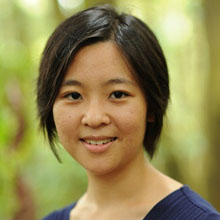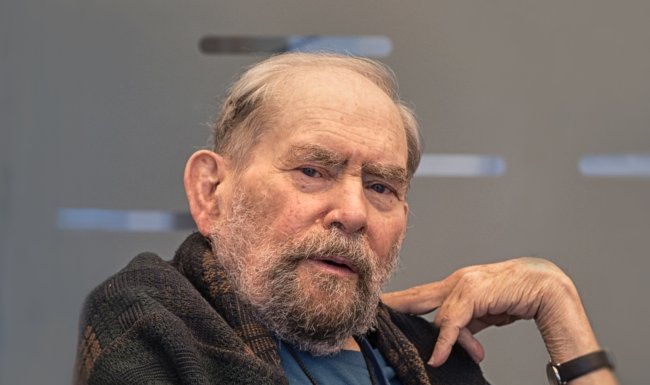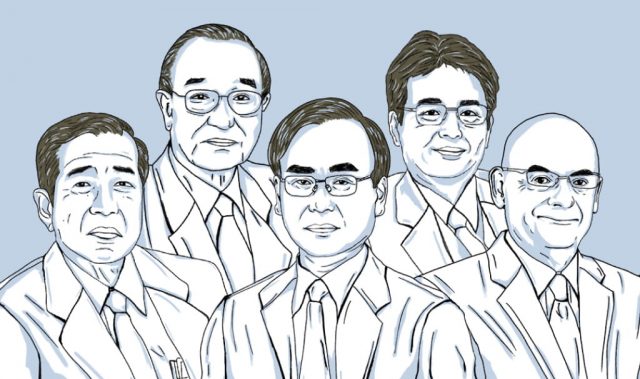
AsianScientist (Jan. 28, 2016) – When he was a young doctor and one of Singapore’s early clinician-scientists, Lim Pin, professor of medicine at the National University of Singapore (NUS), saw patients, lectured at the university’s medical school, went about “begging” from foundations and firms for research funding, and wrote his papers at night and on weekends.
He proved naysayers wrong, showing that medical papers from tiny Singapore were in fact good enough to be published in brand-name journals such as the British Medical Journal.
Today the trim, articulate grandfather of ten is best known for his contributions to NUS. In the course of becoming its longest-serving vice-chancellor, he built the university into a modern research powerhouse.
Putting Singapore on the medical research map
Professor Lim, the son of a Chinese-school principal and teacher, was a top student at Raffles Institution, and subsequently chose to study medicine.
“You’re always challenged by problems that are not trivial—they involve people’s lives and suffering,” he says. “The attraction was being able to do something of value.”
In 1963, when Professor Lim returned from the University of Cambridge, he spent his days tending to patients at the Singapore General Hospital. A holder of a Queen’s Scholarship—the precursor to Singapore’s President’s Scholarship—he also lectured at the University of Singapore.
Before long, he noticed a clinical problem: kidney- and heart-failure patients, who had ostensibly normal levels of magnesium in their blood, were still suffering the symptoms of magnesium deficiency, such as cramps and muscle weakness.
Magnesium’s role in metabolism takes place within cells, where it binds to and guides a molecule called ATP that serves as a key cellular energy source. Professor Lim guessed that any magnesium in the blood must be an imperfect indicator of a person’s true magnesium levels.
Professor Lim and his colleagues tested these patients’ tiny muscle samples, which proved a more accurate method of assessing true magnesium levels. They found that many patients were suffering from magnesium deficiency. The prestigious New England Journal of Medicine and the British Medical Journal published their findings.
“That’s the secret to any good research project,” says Professor Lim. “You start with a question, do a search of the literature, and you find out people have not done something which you think ought to be done. That’s what science is about. You look at something strange or unusual, and ask ‘Why?’”
Their work shifted clinical thinking on how to treat such patients, prompting doctors to look beyond blood for magnesium deficiencies.
Finding time for research was tough, Professor Lim admits, because doctors then had to do more calls than they do today.
“The only time you had for research was weekends and your own time… I had a very indulgent family.”
Funding was another challenge. In the university’s early days, just after Singapore separated from Malaysia in 1965, scientists often had to seek research support from family foundations and pharmaceutical firms.
“We were bankrupt,” Professor Lim says, in reference to the entire university’s paltry annual research budget of S$20,000 (S$78,000 in today’s dollars).
“Whatever money we needed, we sourced on our own,” he says. “But even as a lecturer, I thought: unless we do some research, it’s not a university; it’s a glorified high school.”
Even the lack of a laboratory did not deter him. In order to analyse samples, he collaborated with colleagues at the hospital’s biochemistry department, offering them joint authorship of publications.
“Many of my senior colleagues had never dreamed of being able to publish in an international journal [the New England Journal of Medicine],” Professor Lim enthuses.
His time in the UK had given him the confidence to successfully break through this psychological barrier.
“Our people are equally driven, equally bright, so why are we not there?” he muses. “Had I not gone abroad, I wouldn’t have been able to compare.”
From clinician-researcher to key administrator
By 1978, Professor Lim was head of the university’s department of medicine. The following year, the university appointed him deputy vice- chancellor, and then in 1981, vice-chancellor, the university’s top administrative post. At 45, he had a chance to really build up NUS’s research prowess.
“By the 1980s, [Singapore’s] economy had improved, and there was a general realisation that unless we moved up the ladder in terms of manpower training and technology and skills, we wouldn’t be able to go much further, other than assembling toys,” he says.
“We needed scientific expertise, and the mindset of the workers too needed to change, to develop inquiring minds and a research-oriented kind of culture.”
With policymakers starting to view research less as wasteful expenditure and more as an investment in Singapore’s future, Professor Lim and others successfully lobbied for the Institute of Molecular and Cell Biology (IMCB), opened in 1985 at a cost of S$25m (S$42m in today’s dollars) to perform research on subjects from immunology to plant cell biology. It was one of the first research institutes at NUS.
The university had spent years scouting for and recruiting talented Singaporean researchers, such as plant biologist Chua Nam Hai, who had already established careers abroad.
“We managed to get a core of maybe half a dozen good people,” Professor Lim says. “It was like a crystal—once we were able to get a nucleus sorted out, it grew very nicely.”
Even Glaxo, a pharmaceutical firm, donated S$6m (S$10.1m in today’s dollars) to the institute, spearheading public-private sector symbiosis in Singapore.
“Glaxo… had a large manufacturing operation in Singapore that made an antacid called ranitidine, and they decided to do something as gratitude to Singapore and encourage it to move up the science and technology ladder,” says Professor Lim.
“Plus, as the industry became more and more high-tech, you need support, labs, training and so on… So it was also in their interest!”
With encouragement, incentives and funding, the university’s research output grew. Professor Lim made research a key determinant of promotion for professors, and prioritised funding for projects that relied on interdisciplinary collaboration.
In the 1980s, the university’s research budget was “a couple of hundred thousand dollars a year”; by the time Professor Lim stepped down as vice-chancellor in 2000, NUS had a multi-million dollar annual research kitty and half a dozen research institutes, including those in the social sciences such as the East Asian Institute.
“I think my biggest contribution was to create and strengthen the research culture on campus, and I hope that has rubbed off onto the whole country,” he says.
Today, the private sector contributes about two dollars of R&D funding for every public dollar—the right mix, contends Professor Lim, and in line with other developed countries.
But he believes the prerogative is still with the public sector to initiate and direct research.
“And if the private sector sees that the research is relevant to their needs, they’ll join in,” he says.
A mature research climate
In 2004, the IMCB was incorporated into the Agency for Science, Research and Technology, which was setting up its Biopolis research campus.
“It was a bit painful, but it’s all for a good cause,” Professor Lim admits. “There is better synergy between institutes if they are managed under one umbrella.”
Since those early, lean days, Singapore’s commitment to science and technology has been on the right track, he thinks.
“In the early days, [science] as a career was not quite as attractive. Now, respect is there and the remuneration is quite respectable.”
Importantly, he says, the government believes that science and technology are fundamental for Singapore’s future development.
“The ultimate objective is to produce something useful to the socioeconomic development of Singapore,” he says.
On the question of managing Singapore’s human resources, Professor Lim believes it is important to both recruit the best foreign talent available while grooming local scientists for the long term. As vice-chancellor, he scaled up NUS’s senior tutor scheme, which hired promising young graduates, sent them abroad for their PhDs, and gave them jobs on graduation. (It was later replaced by the NUS Overseas Graduate Scholarship scheme.) Today, those onetime senior tutors include Brenda Yeoh, dean of NUS’s arts and social sciences faculty, and Karina Gin, professor of environmental engineering.
At 79, Professor Lim continues to see patients and tutor endocrinology trainees and undergraduates. He has also chaired the national Bioethics Advisory Committee and the National Wages Council.
“Endocrinology is my specialty; I still read journals and keep up in this area of medicine—there’s always something new. Medicine’s always growing,” Professor Lim says. “But younger people are more agile; I’m an armchair researcher now.”
This feature is part of a series of 25 profiles, first published as Singapore’s Scientific Pioneers. Click here to read the rest of the articles in this series.
———
Copyright: Asian Scientist Magazine; Photo: Cyril Ng.
Disclaimer: This article does not necessarily reflect the views of AsianScientist or its staff.













